Living Inheritance of Traditional Knowledge and Practical Wisdom of Severe Cold-Region Traditional Villages: A Case Study of Jinjiang Chalet Village in the Changbai Mountain Area
Abstract
1. Introduction
2. Materials and Methods
2.1. Local Traditional Knowledge and Practical Wisdom System Model
2.1.1. Traditional Ecological Knowledge
2.1.2. Traditional Construction Techniques
2.1.3. Cultural–Spiritual Beliefs
2.2. Living Inheritance
2.3. Comparison of Indigenous Peoples’ Building Skills in Different Climate Zones
2.4. Research Area: “Living Fossil of Chalet Houses in Changbai Mountain”—Jinjiang Chalet Village (JCV)
2.5. The Influence of the Changbai Mountain’s Special Ecological Community on the Traditional Severe Cold-Region Village
2.6. Researcher Positionality and the Technical Route
2.6.1. Researcher Positionality
2.6.2. Technical Route
2.7. A Logical Framework for Resilience Based on “Pressure–State–Response”
3. Results
3.1. Analysis of Ecological Resilience Characteristics
3.1.1. Intensity of Land Development
3.1.2. Adaptation to Soil Erosion and Debris Flow Disasters
3.1.3. Forest Fire, Pest Disaster Adaptation
3.1.4. Biodiversity
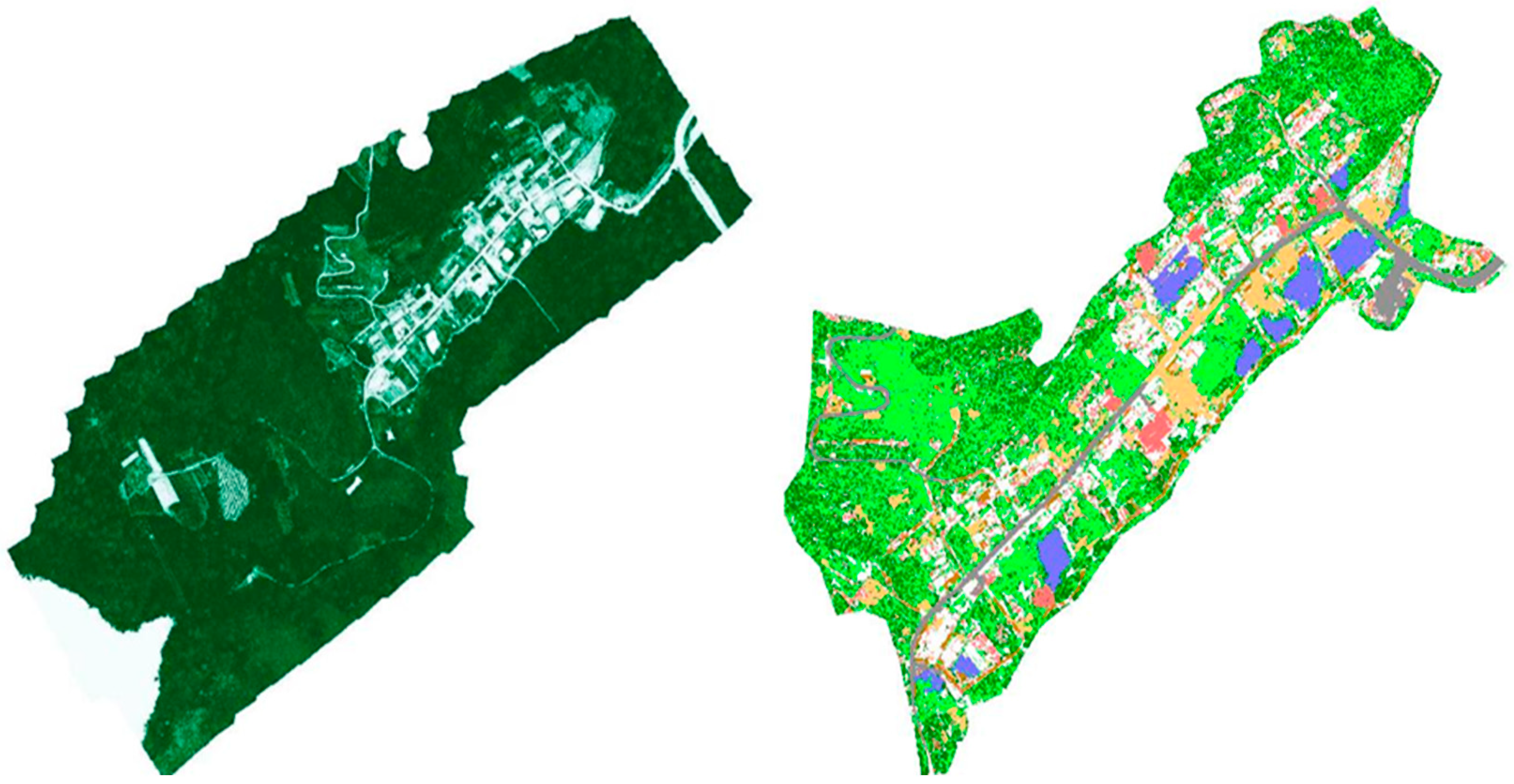
| Pressure | State (Adaptation Measures) | Adaptation Stage | Traditional Knowledge and Sources | Modern Application Insights |
|---|---|---|---|---|
| Low temperatures, cold winds |
| Preventive and Maintenance | Forest culture, sacrificial words (Lonely Lumberjack, Fusong County Chronicle) Folk songs, proverbs | Integrate cultural rituals into sustainable land-use policies; combine traditional reverence with modern governance. |
| Soil erosion, debris flows |
| Preventive and Mitigation | Felling ballads (Xia Jian Zi) County records on gully treatment | Apply traditional material efficiency principles to modern construction waste reduction. |
| Forest fires |
| Preventive and Post-disaster | County annals on fire restrictions | Blend traditional fire management with modern monitoring systems for enhanced resilience. |
| Pest infestations |
| Preventive and Control | County annals, proverbs on pest management | Promote eco-friendly pest control methods inspired by traditional biological techniques. |
| Biodiversity loss |
| Conservation and Coexistence | Folk dramas, oral histories Hunter rules | Adopt species-specific conservation strategies and integrate Indigenous ecological ethics into biodiversity policies. |
3.2. Analysis of Climate Resilience Characteristics
3.2.1. Meteorological Disasters Under Common Disturbances of Waterlogging, Freezing, and Snow
3.2.2. Climate Resilience Site Selection and Yard Layout
3.2.3. Climate Resilient Buildings and Their Courtyard Environment Analysis
3.3. Analysis of Social Resilience Characteristics
3.3.1. “Channeling Shingles Festival” as the Link of the Township Catalpa Affair
3.3.2. Local Education Based on Practical Wisdom Inheritance and Human Bond
3.4. Analysis of the Characteristics of Economic Resilience
3.5. The Extraction of Practical Wisdom Supporting Resilience
4. Living Inheritance Practice: Severe Cold-Region Rural Ecological Smart Wood Craftsmanship Laboratory
4.1. Project Overview
4.2. Living Inheritance of Ecological–Climatic Resilience
4.2.1. The Site Selection and Courtyard Space of “Mountainside Water—100 Feet as Size”
4.2.2. The Support Structure of “Four Beams and Eight Columns—Separation of Wall Pillars”
4.2.3. Enclosure Structure for “Cold Protection and Warmth”
4.3. The Hidden Living Inheritance of Social and Economic Resilience
4.3.1. Characteristic Training Base
4.3.2. Cultivation of Social Talents
4.3.3. National First-Class Curriculum Construction
5. Discussion
5.1. Linking JCV’s Multi-Dimensional Traditional Knowledge to the UN Sustainable Development Goals
5.1.1. Life on Land (SDG 15)
5.1.2. Climate Action (SDG 13)
5.1.3. Sustainable Cities and Communities (SDG 11)
5.1.4. Quality Education (SDG 4)
5.1.5. Industry, Innovation, and Infrastructure (SDG 9)
5.1.6. Decent Work and Economic Growth (SDG 8)
5.2. Integrated Innovation That Differs from Previous Examples
5.3. Limitations
5.3.1. Contextual Specificity
5.3.2. Temporal Constraints
5.3.3. Qualitative Subjectivity
5.3.4. Scalability of Hybrid Solutions
5.3.5. Institutional Barriers
6. Conclusions
6.1. Theoretical Advancements in Traditional Knowledge Research
6.2. Practical Innovations for Climate Resilience
6.3. Policy and Global Sustainability Implications
Author Contributions
Funding
Institutional Review Board Statement
Informed Consent Statement
Data Availability Statement
Conflicts of Interest
Abbreviations
| PSR | Pressure–State–Response (ecological model) |
| ILBPs | Indigenous Land-based Practices |
| LLICP | Land-based Learning in Indigenous Culture Camps |
| TEK | Traditional Ecological Knowledge |
| TCT | Traditional Construction Technique |
| LBS | Land-based Spirituality |
| GIS | Geographic Information System |
| UAV | Unmanned Aerial Vehicle |
| NDVI | Normalized Difference Vegetation Index (used for vegetation analysis) |
| NDWI | Normalized Difference Water Index |
| UNFCCC | United Nations Framework Convention on Climate Change |
References
- Zou, J.; Liu, Y.; Tan, F. Vulnerability of traditional village landscape and its quantitative evaluation: A case study of Xintian County, Hunan Province. Geogr sci. 2018, 38, 1292–1300. [Google Scholar] [CrossRef]
- Ksenofontov, S.S.; Petrov, A.N. Global change impacts on Indigenous sustainability in Sakha Republic: A synthesis of knowledge. Sustainability 2024, 16, 1157. [Google Scholar] [CrossRef]
- Khalafzai, M.A.K.; McGee, T.K.; Parlee, B. Flooding in the James Bay region of northern Ontario, Canada: Learning from traditional knowledge of Kashechewan First Nation. Int. J. Disaster Risk Reduct. 2019, 36, 101100. [Google Scholar] [CrossRef]
- AL-Falahi, A.H.; Barry, S.; Gebrechorkos, S.H. Potential of Traditional Adaptation Measures in Mitigating the Impact of Climate Change. Sustainability 2023, 15, 15442. [Google Scholar] [CrossRef]
- Chinese Government Portal. Available online: https://www.gov.cn/zhengce/zhengceku/2022-06/14/content_5695555.htm (accessed on 10 May 2022).
- GB 50176-1993; Code for Thermal Design of Civil Buildings. MOHURD: Beijing, China, 1993. (In Chinese)
- Bayrak, M.M.; Hsu, Y.Y.; Hung, L.S. Global climate change and Indigenous peoples in Taiwan: A critical bibliometric analysis and review. Sustainability 2020, 13, 29. [Google Scholar] [CrossRef]
- Yang, L.; Fu, R.; He, W. Adaptive thermal comfort and climate responsive building design strategies in dry–hot and dry–cold areas: Case study in Turpan, China. Energy Build. 2020, 209, 109678. [Google Scholar] [CrossRef]
- Yin, L. Tibetan cognition and response to climate change: An investigation of Guonian Administrative Village, Deqin County, Yunnan Province. Ideol. Front 2011, 37, 24–28. [Google Scholar]
- Guan, Z.; Chou, S. Impact assessment and analysis of heavy rain (snow) weather disaster in Baishan. Agric. Disaster Res. 2024, 14, 170–172. [Google Scholar]
- Turner, N.J.; Cuerrier, A.; Joseph, L. Well grounded: Indigenous Peoples’ knowledge, ethnobiology and sustainability. People Nat. 2022, 4, 627–651. [Google Scholar] [CrossRef]
- Zhao, H.; Liu, T.; Guo, S. From tradition to future—Exploring the theory and practice of traditional residential research in Cold region in Jilin Jianzhu University. New Archit. 2024, 145–149. [Google Scholar]
- Datta, R.; Kibria, A. Indigenous women-led climate crisis solutions: A decolonial perspective from the Garo Indigenous community in Bangladesh. Polit. Geogr. 2025, 117, 103258. [Google Scholar] [CrossRef]
- Seeland, K. (Ed.) Nature is Culture: Indigenous Knowledge and Socio-Cultural Aspects of Trees and Forests in Non-European Cultures. 1997. Available online: https://www.cabidigitallibrary.org/doi/full/10.5555/19980611297 (accessed on 10 May 2022).
- Xiang, W.N. Ecophronesis: The ecological practicl wisdom for and from ecological practice. Landsc. Urban Plan. 2016, 155, 53–60. [Google Scholar] [CrossRef]
- Turner, N.J.; Ignace, M.B.; Ignace, R. Traditional ecological knowledge and wisdom of aboriginal peoples in British Columbia. Ecol. Appl. 2000, 10, 1275–1287. [Google Scholar] [CrossRef]
- Zakharova, O.V.; Suvorova, L.G.; Bogdanova, M.V. Environmental education: Practical wisdom of Indigenous peoples in Western Siberia. Sustainability 2021, 13, 4040. [Google Scholar] [CrossRef]
- Cook, J. Architecture Indigenous to extreme climates. Energy Build. 1996, 23, 277–291. [Google Scholar] [CrossRef]
- Wang, Y.; Zhang, Z. A study on local knowledge extraction and system construction of traditional village landscape—A case study of Guanzhong Region. Chin. Gard. 2022, 38, 78–83. [Google Scholar] [CrossRef]
- Wang, X.; Lei, Z. A graphical record of the construction techniques of traditional sea grass house. New Archit. 2018, 142–146. [Google Scholar] [CrossRef]
- Wang, Y.; Zhang, Z. Local knowledge structure and evaluation of traditional village landscape: A case study of Yuanjiacun. Chin. Gard. 2021, 5, 98–103. [Google Scholar] [CrossRef]
- Xin, R.-H.; Zeng, J.; Huang, Y. Based on practical wisdom tradition of southwest mountainous village protection study. Chin. Garden 2019, 35, 95–99. [Google Scholar] [CrossRef]
- Wang, H.; Zhou, Y.; Mo, H. Analysis of traditional residential building techniques in southeast Zhejiang under the influence of typhoon. New Archit. 2012, 144–147. [Google Scholar] [CrossRef]
- Datta, R. A relational theoretical framework and meanings of land, nature, and sustainability for research with Indigenous communities. Local Environ. 2015, 20, 102–113. [Google Scholar] [CrossRef]
- Datta, R.; Chapola, J.; Datta, P. Resiliency in Disaster: The Relevance of Indigenous Land-based Practice. J. Indig. Soc. Dev. 2022, 11, 67–86. [Google Scholar]
- Datta, P.; Datta, R.; Lewis, K. Youth response to climate change: Learning from Indigenous land-based camp at the Northern Saskatchewan Indigenous Communities, Canada. Explore 2024, 20, 102985. [Google Scholar] [CrossRef] [PubMed]
- Datta, R.; Chatterjee, S. Indigenous land-based spirituality: Climate crisis adaptations in the coastal regions of the Rakhine Indigenous community in Bangladesh. J. Environ. Stud. Sci. 2024, 1–13. [Google Scholar] [CrossRef]
- Chan, J.H.; Iankova, K.; Zhang, Y. The role of self-gentrification in sustainable tourism: Indigenous entrepreneurship at honghe hani rice terraces world heritage site, China. J. Sustain. Tour. 2016, 24, 1262–1279. [Google Scholar] [CrossRef]
- Zhang, M.; Zhang, J.; Liu, Q. Research on the strategies of living conservation and cultural inheritance of vernacular dwellings—Taking five vernacular dwellings in China’s Northern Jiangsu as an example. Sustainability 2022, 14, 12503. [Google Scholar] [CrossRef]
- Dayaratne, R. Reinventing traditional technologies for sustainability: Contemporary earth architecture of Sri Lanka. J. Green Build. 2010, 5, 23–33. [Google Scholar] [CrossRef]
- Eidinow, E. Telling stories: Exploring the relationship between myths and practical wisdom. Landsc. Urban Plan. 2016, 155, 47–52. [Google Scholar] [CrossRef]
- Mashford-Pringle, A.; Fu, R.; Stutz, S. Mamwi gidaanjitoomin/together we build It: A systematic review of traditional Indigenous building structures in North America and their potential application in contemporary designs to promote environment and well-being. Int. J. Environ. Res. Public Health 2023, 20, 4761. [Google Scholar] [CrossRef]
- Liu, A. “Regenerating” Tradition: A Cultural Memory Method to Reshape the Living Inheritance of Intangible Cultural Heritage of Ethnic Minorities. In Proceedings of the 3rd International Conference on Language, Art and Cultural Exchange (ICLACE 2022), Luoyang, China, 27–29 May 2022; Atlantis Press: Paris, France, 2022; pp. 647–656. [Google Scholar] [CrossRef]
- Lu, Y.; Zhou, F. A study on the sustainable development of traditional lakeside settlements in plateau lake cities in Southwest China: A case study of lakeside villages in Dianchi Lake, Kunming. Mod. Urban Res. 2024, 88–95. [Google Scholar] [CrossRef]
- Xie, X.; Zhou, G.; Yu, S. Study on rural ecological resilience measurement and optimization strategy based on PSR-“Taking Weiyuan in Gansu Province as an Example”. Sustainability 2023, 15, 5462. [Google Scholar] [CrossRef]
- Wang, J.; Wang, Y.; Lin, G. Study on Rural Classification and Resilience Evaluation Based on PSR Model: A Case Study of Lvshunkou District, Dalian City, China. Sustainability 2024, 16, 6708. [Google Scholar] [CrossRef]
- Yang, L. Research on the Dynamic Protection of Traditional Villages under the Background of Rural Revitalization: A Case Study of Dong Villages in Southwest China. Res. Social. Chin. Charact. 2021, 4, 85–92. [Google Scholar]
- Zhang, Y.; He, L. From “Traditional Settlement” to “Ecological Museum”: A Case Study of the Regeneration Design of the Li and Miao Cultural Tourism Area in Binlang Valley, Baoting, Hainan. Decoration 2024, 7, 97–102. [Google Scholar] [CrossRef]
- Li, J.; Zhang, P.; Zhang, Z. Local knowledge in the application of sustainable spatial planning study. J. Int. Urban Plan. 2022, 5, 131–138. [Google Scholar] [CrossRef]
- Tang, X. A Brief Discussion on the Adaptability of Han Residential Buildings in Lingnan. South. Archit. 2008, 37–39. [Google Scholar]
- Fang, J.; Yang, D. Regional Aesthetic and Cultural Characteristics of Dai Traditional Houses in Yunnan Province. South. Archit. 2011, 79–82. [Google Scholar] [CrossRef]
- Peng, X.; Xu, G.; Liu, C. Roof surface wind pressure distribution of hakka tulou study. J. Build. Struct. 2010, 31, 193–196. [Google Scholar] [CrossRef]
- Gao, B.; Yang, Y.; Wang, Y. Shanbei Gu kiln residential green building intelligence parsing. Ind. Constr. 2020, 50, 15–27. [Google Scholar] [CrossRef]
- El Harrouni, K.; Kharmich, H.; Karibi, K. Traditional earth architecture as a tool for sustainability and adaptation to climate change of heat and cold extremes. Mater. Res. Proc. 2024, 40, 218–225. [Google Scholar]
- Bodach, S.; Lang, W.; Hamhaber, J. Climate responsive building design strategies of vernacular architecture in Nepal. Energy Build. 2014, 81, 227–242. [Google Scholar] [CrossRef]
- Cao, B. Changbai Mountain Forest Culture; Times Literature and Art Publishing House: Changchun, China, 2014. [Google Scholar]
- Ministry of Housing and Urban-Rural Development. Housing Urban and Rural Construction Ministry, the Ministry of Culture, Ministry of Finance Announced on the Second Batch of Village of Chinese Traditional Village Directory List. Available online: https://www.gov.cn/zwgk/2013-08/30/content_2477776.htm (accessed on 30 August 2013).
- Wang, Y.; Zhang, S.F. Research progress and integration model of spatial governance in mountainous rural human settlements in recent 20 years. West. Living Environ. J. 2023, 38, 54–58. [Google Scholar] [CrossRef]
- Sun, C.X. Annals of Fusong County; Jilin University Press: Changchun, China, 2009; p. 11. [Google Scholar]
- Li, Y.; Song, C.; Huang, H. Rural Resilience in China and Key Restriction Factor Detection. Sustainability 2021, 13, 1080. [Google Scholar] [CrossRef]
- Cao, B. Lonely Woodcutter; Xiyuan Publishing House: Beijing, China, 2009; p. 9. [Google Scholar]
- Zhen, S. Space of Traditional Village Ecological Water Conservancy: Cold Spectrum Interpretation and Pattern Extraction; Jilin Jianzhu University: Jilin, China, 2023. [Google Scholar] [CrossRef]
- Li, B.; Long, X.; Dou, Y. Research on the Restoration of Spatial Order in Traditional Villages from the Perspective of Organic Renewal: A Case Study of Zhang Guying Village. Small Town Constr. 2022, 40, 93–101. [Google Scholar]
- Qiu, H.; He, Y.; Zhao, Y.; Shen, S.; Hu, X. Research on the Spatial Adaptability of Water in Traditional Villages Based on Schema Language: A Case Study of Zhang Guying Village. Furnit. Inter. Decor. 2022, 29, 55–59. [Google Scholar] [CrossRef]
- Jia, Z.; Zhou, Z. Classification of Traditional Settlement Forms in Mountainous Areas Based on three-dimensional Quantization and factor Clustering Methods: A Case Study of Miao Settlements in Qiandongnan. J. Mt. 2019, 3, 424–437. [Google Scholar] [CrossRef]
- Zhao, H.; Che, Y. Wisdom of Ecological Water Control in Traditional Villages; Architecture and Architecture Press: Beijing, China, 2021; p. 8. [Google Scholar]
- Zhou, L.; Yu, L. Discussion on technical measures of traditional houses in Northeast China to cope with cold climate. South. Archit. 2010, 12–15. [Google Scholar] [CrossRef]
- Shi, H. Optimization Design and Research on Cold Resistance Performance of “Woodcut” Residential Buildings in Cold Region; Jilin Jianzhu University: Changchun, China, 2021. [Google Scholar]
- Cao, B. Chalet Village; Literature and History Press: Beijing, China, 2014. [Google Scholar]
- Xu, H.; Li, K.; Liu, Z. Carbon emission analysis of passive chalet structures in cold regions based on Type comparison. Build. Technol. 2021, 52, 324–328. [Google Scholar]
- Corntassel, J.; Hardbarger, T. Educate to perpetuate: Land-based pedagogies and community resurgence. Int. Rev. Educ. 2019, 65, 87–116. [Google Scholar] [CrossRef]
- Ngowi, A.B. Virtues of construction training in traditional societies. Build. Environ. 1997, 32, 289–294. [Google Scholar] [CrossRef]
- Okui, K.; Sawada, Y.; Yoshida, T. “Wisdom of the elders” or “loss of experience” as a mechanism to explain the decline in traditional ecological knowledge: A case study on Awaji Island, Japan. Hum. Ecol. 2021, 49, 353–362. [Google Scholar] [CrossRef]
- Yuan, Q.; Qu, H.; Leng, H.; Qu, H. Rural resilience improvement and planning response path in cold region. Urban Plan. Shanghai 2023, 2, 8–14. [Google Scholar]
- People’s Daily Online—Jilin Channel. Entered the Baishan Linjiang Chalet Village: Explore the Last Chalet Village Changbai Mountain. Available online: http://jl.people.com.cn/n2/2022/0127/c349771-35116045.html (accessed on 27 January 2022).
- Xinhua. How Did the “Broken Chalet House” in the “Hollow village” Become the “Golden House”?—Changbai Mountain “Last Chalet House Village” Reborn Record. Available online: https://www.news.cn/politics/2023-05/02/c_1129585190.htm (accessed on 2 May 2023).
- Yan, W.; Xiang, W.; Yuan, L. Exploring the practical wisdom of traditional human settlement: A case study of Dujiangyan Irrigation Area, a World Cultural Heritage area. Urban Plan. Int. 2017, 32, 1–9. [Google Scholar] [CrossRef]
- Zhao, H. Outcome Set of “Practical Wisdom Mining and Creative Design Talent Training of Historical and Cultural Villages in Northeast China”; Northeastern University Press: Shenyang, China, 2022; p. 12. [Google Scholar]
- Kong, Y.; Xin, S.; Zhang, N. Translation and reconstruction, traditional construction intelligence application in the architectural design. J. Constr. 2020, 23–29. [Google Scholar] [CrossRef]
- Yuan, Q.; Yuan, Y.; He, H. Interpretation and rebirth of traditional villages: An exploration on the practice of local design of traditional villages in Donggouke and Dike in hilly area of eastern Hubei. West. Living Environ. J. 2023, 38, 23–30. [Google Scholar] [CrossRef]
- Li, Z. The ancient Beijing micro urban design jacquard detection. J. Resid. Environ. West 2014, 29, 64–67. [Google Scholar]
- Zhao, H.; Xie, W.; Lu, D. The ancient ecological practice wisdom of traditional villages in northern China and its contemporary enlightenment. Mod. Urban Res. 2018, 20–24. [Google Scholar] [CrossRef]
- Sözer, H.; Bekele, S. Evaluation of innovative sustainable design techniques from traditional architecture: A case study for the cold dry climatic region in Turkey. Archit. Sci. Rev. 2018, 61, 143–155. [Google Scholar] [CrossRef]
- Zheng, S.; Han, B.; Wang, D.; Ouyang, Z. Practical wisdom and inspiration underlying the planning and construction of ancient human settlements: Case study of hongcun UNESCO world heritage site in China. Sustainability 2018, 10, 1345. [Google Scholar] [CrossRef]
- Fan, J.; Zheng, B.; Zhang, B.; Huang, Z.; Liu, J. Research on the revitalization path of ethnic villages based on the inheritance of spatial cultural genes-taking tujia village of feng xiang xi in Guizhou province as a case study. Sustainability 2023, 15, 1303. [Google Scholar] [CrossRef]
- Carrera Díaz, G.; Del Espino Hidalgo, B.; Méndez, A.D. Vernacular architecture and traditional trades. Social innovation and cultural heritage in rural Andalusia. In Proceedings HERITAGE 2022-International Conference on Vernacular Heritage: Culture, People and Sustainability; Universitat Politècnica de València: Valencia, Spain, 2022. [Google Scholar] [CrossRef]



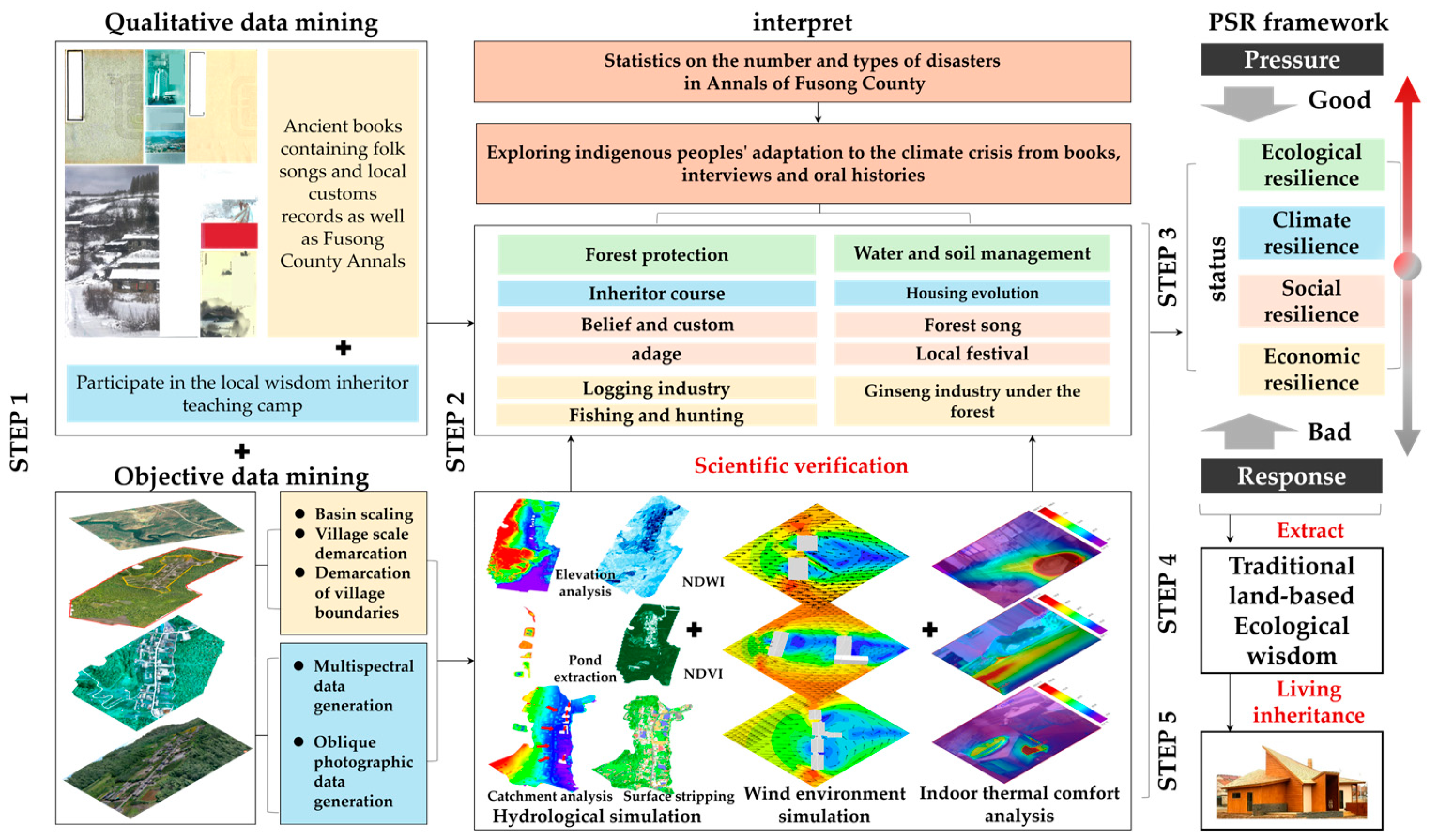
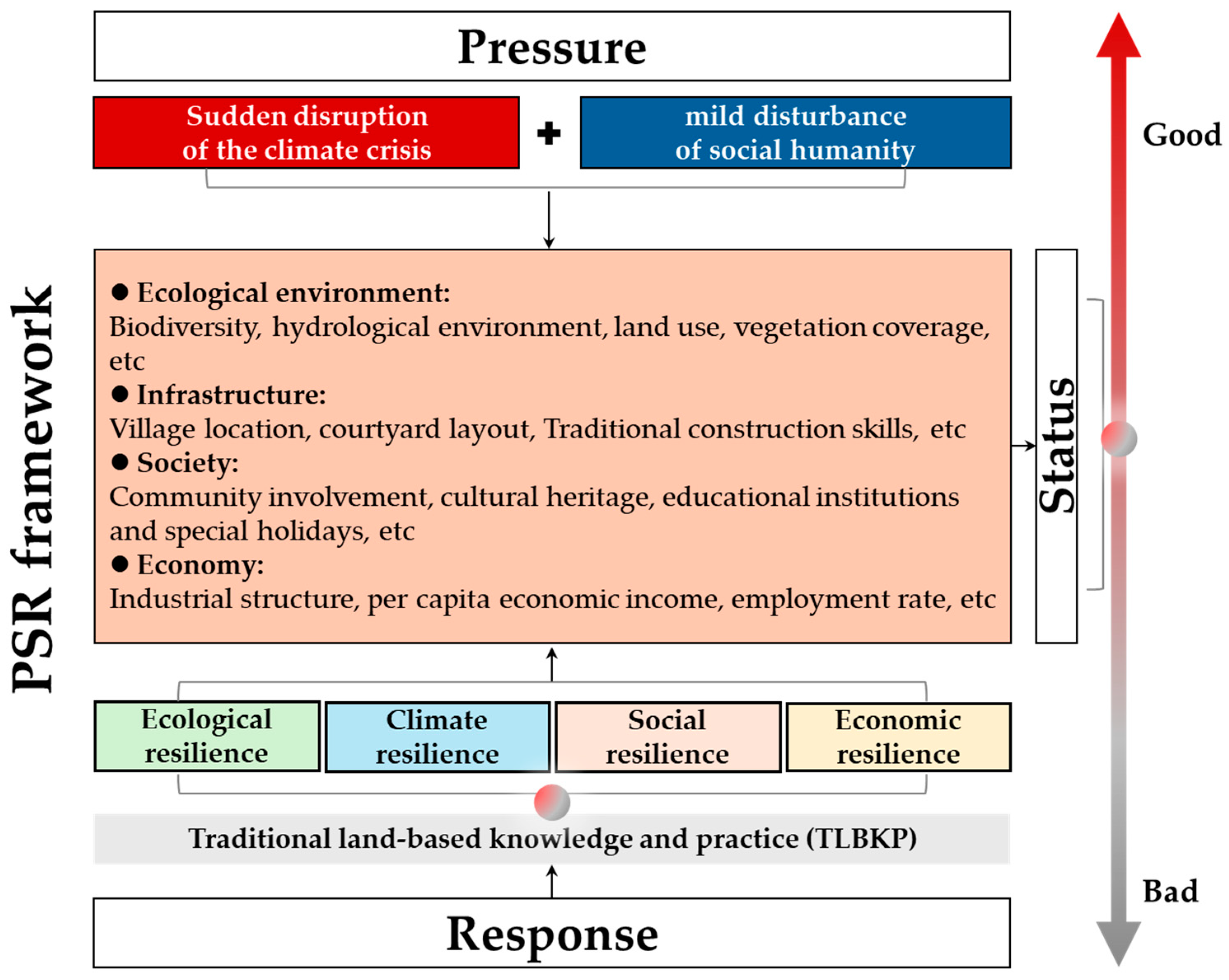
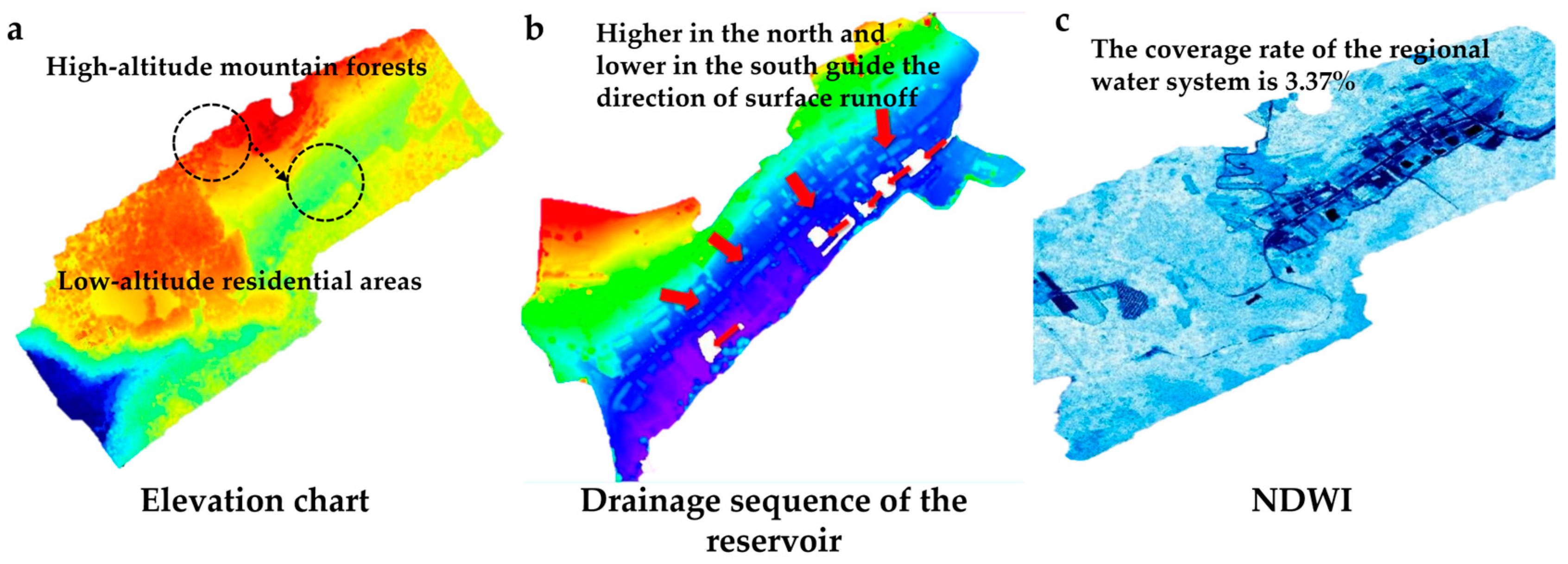

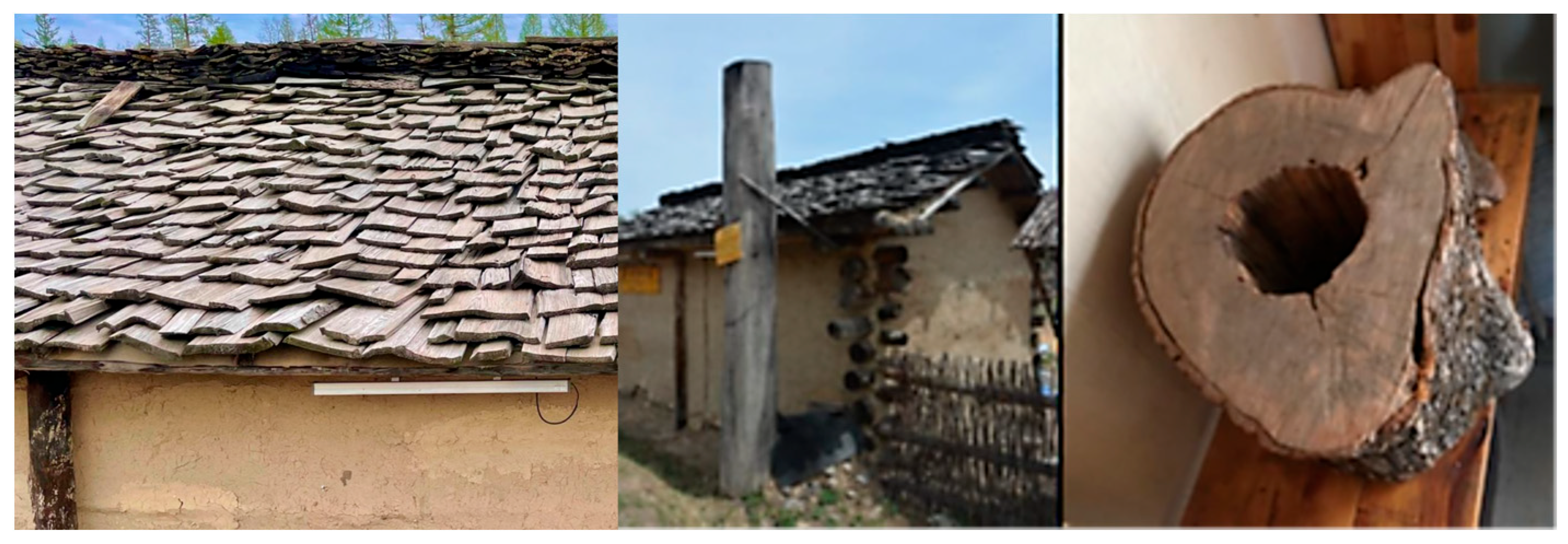

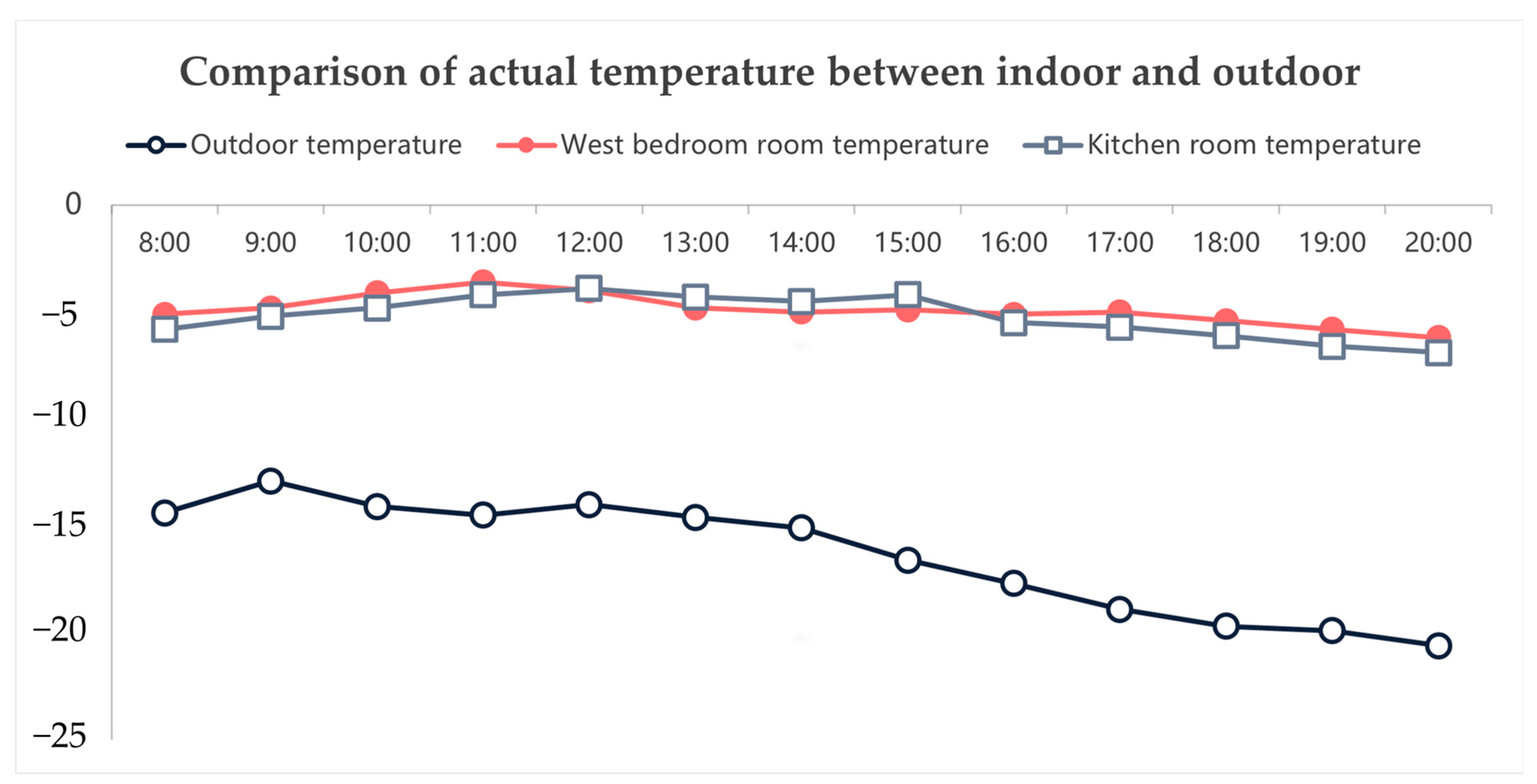

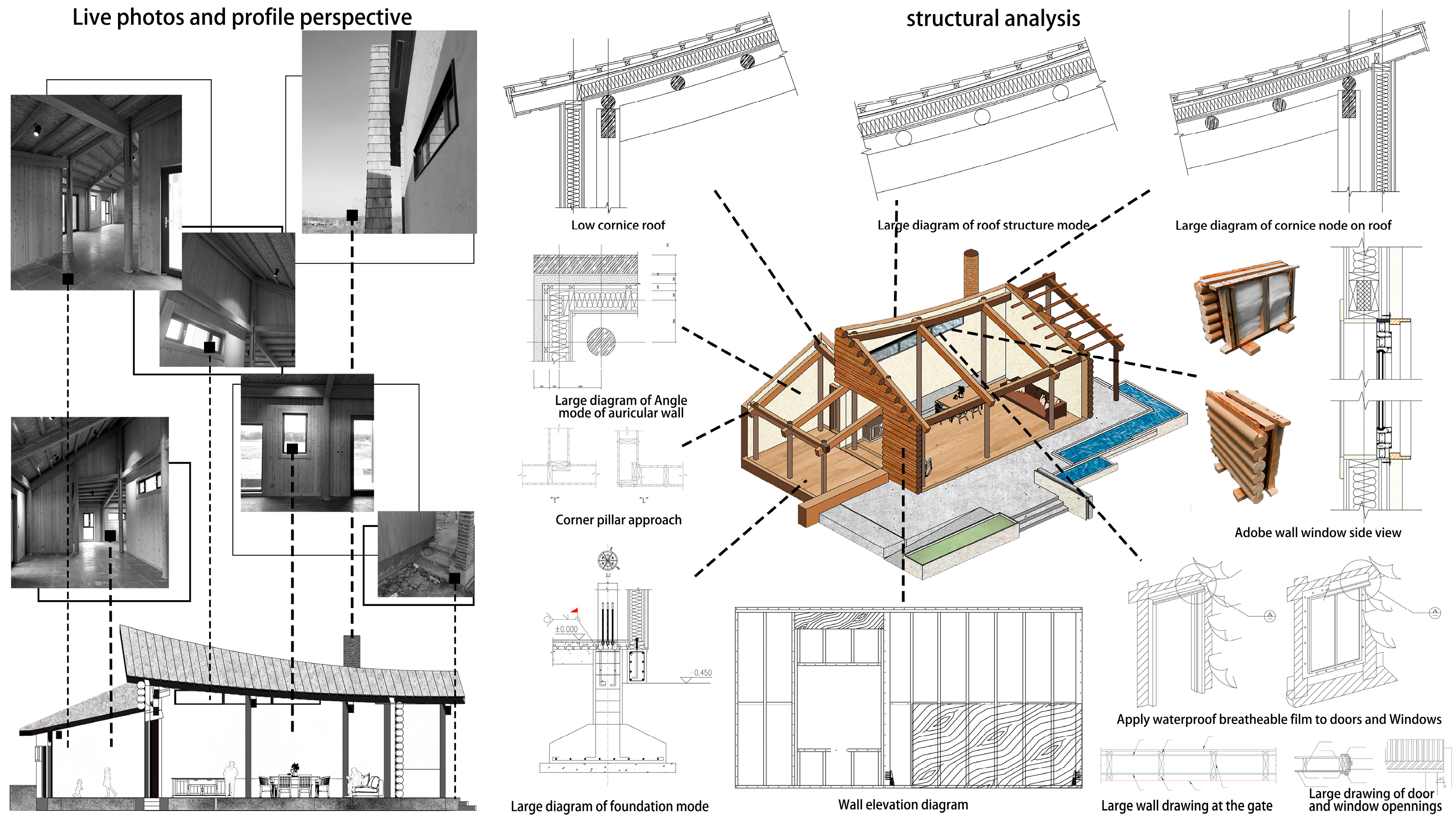
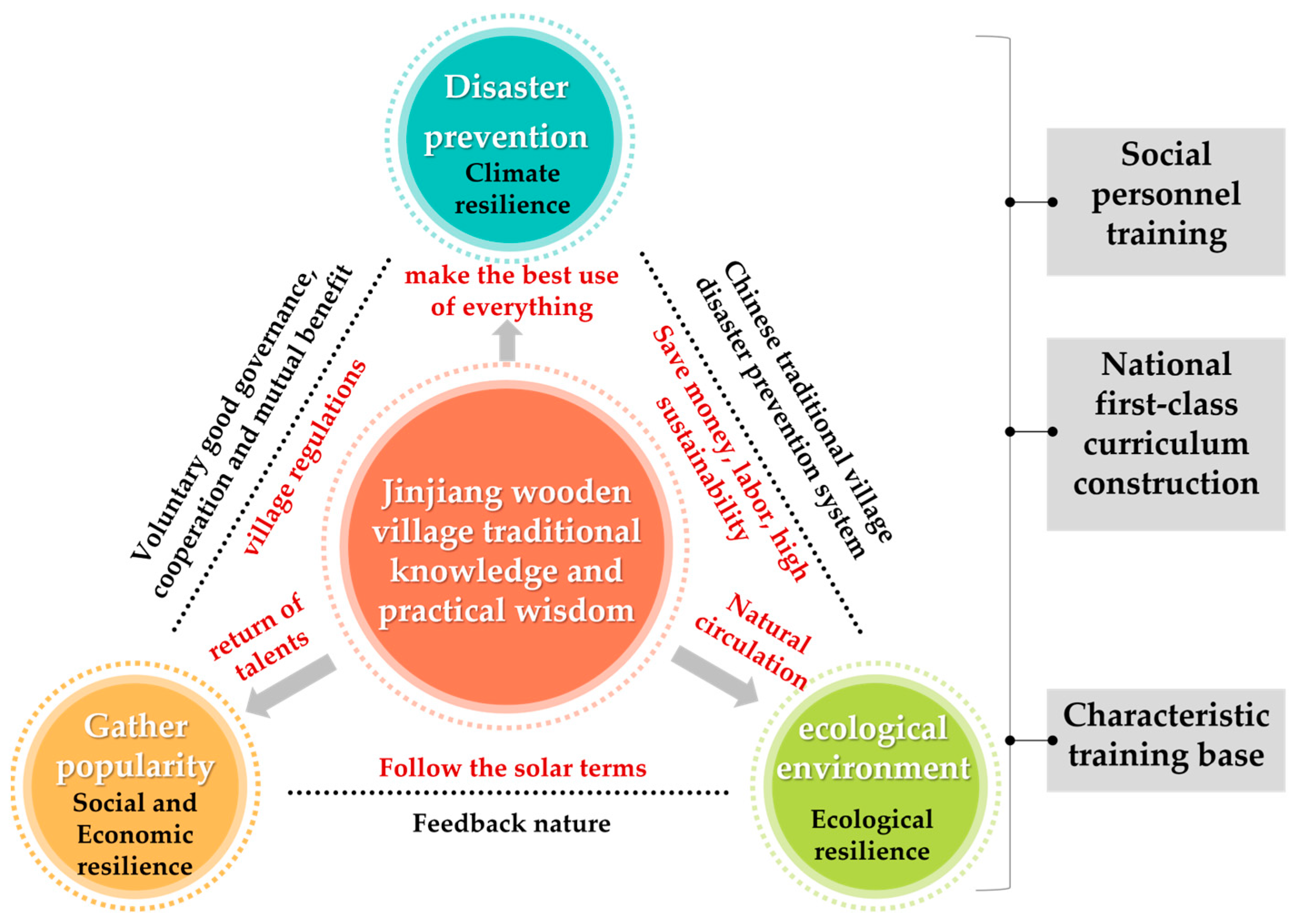
| Types of Disasters | Frequencies of Disasters | Months of Occurrence |
|---|---|---|
| Floods | 18 | July–August |
| Snow disaster, low-temperature cold damage | 13 | October–April, July–August of the following year |
| Wind damage | 5 | March–September |
| Village Site Selection Form | Site Selection Diagram | Advantages | Weaknesses |
|---|---|---|---|
| Foothill type |  | Mountain vegetation wind effect is the best, near water conservancy to avoid flooding | Frost effect |
| Mountainside type |  | Wind and water-repellent | The terrain is more complicated |
| Hilltop type |  | Flat and easy to build | High wind speed and poor wind protection |
| Valley basin type | 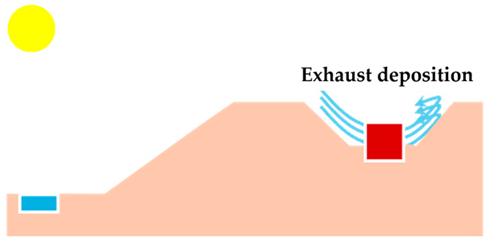 | Good wind effect | No air circulation, rain accumulation |
| Courtyard Form | Yard Plan | Wind Velocity Vector Diagram | Wind Pressure Cloud Map | Climate Resilience Characteristics |
|---|---|---|---|---|
| L-shaped building reservoir | 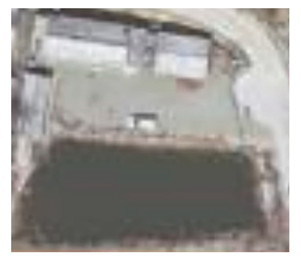 |  | 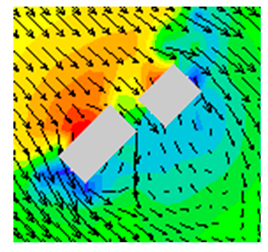 | Regulate microclimate with southwest monsoon and water pond in summer |
| South and north building enclosures |  | 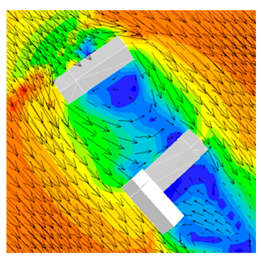 | 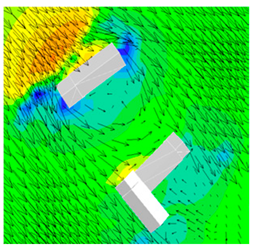 | The yard has the lowest wind speed |
| Type I townhouse sharing |  | 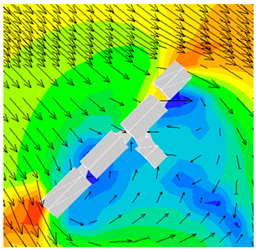 |  | Lowest wind pressure in yard |
| Pressure | State (Adaptation Measures) | Adaptation Stage | Traditional Knowledge and Sources | Modern Application Insights |
|---|---|---|---|---|
| Floods, Waterlogging |
| Preventive and Mitigation |
| Integrate Indigenous hydrological wisdom into urban stormwater management systems. |
| Low temperatures, Frost |
| Preventive and Maintenance |
| Apply passive solar design principles and bio-based insulation in cold-region architecture. |
| Snow Loads, Windstorms |
| Structural Resilience |
| Promote timber-based construction for low-carbon, climate-resilient housing. |
| Drought, Heatwaves |
| Resource Optimization |
| Develop decentralized water-harvesting systems inspired by gravity-fed mountain hydrology. |
| Air Pollution, Humidity |
| Microclimate Regulation |
| Blend bioclimatic design with green infrastructure for urban heat island mitigation. |
| Pressure | State (Adaptation Measures) | Adaptation Stage | Traditional Knowledge and Sources | Modern Application Insights |
|---|---|---|---|---|
| Urbanization, Population Aging |
| Community Recovery and Restructuring |
| Leverage cultural festivals to revitalize community engagement in urbanizing rural areas. |
| Cultural Erosion |
| Cultural Preservation |
| Integrate Elder mentorship programs into formal education to safeguard intangible heritage. |
| Social Fragmentation |
| Institutional Collaboration |
| Foster hybrid governance models that blend grassroots participation with institutional support. |
| Skill Loss |
| Adaptive Innovation |
| Develop vocational training systems rooted in traditional craftsmanship and modern sustainability. |
| Identity Disruption |
| Identity Reinforcement |
| Design place-based tourism initiatives that empower communities as cultural stewards. |
| Pressure | State (Adaptation Measures) | Adaptation Stage | Traditional Knowledge and Sources | Modern Application Insights |
|---|---|---|---|---|
| Natural Disasters, Market Fluctuations |
| Risk Mitigation and Diversification |
| Promote agro-industrial clusters blending traditional knowledge with modern supply chains. |
| Policy Shifts, Economic Modernization |
| Structural Transformation |
| Integrate cultural heritage into eco-tourism models to drive inclusive rural revitalization. |
| Youth Outmigration, Skill Gaps |
| Innovation and Regeneration |
| Foster circular economies by linking local crafts with global niche markets. |
| Inheritance Elements | Jinjiang Chalet Village | Landing Project |
|---|---|---|
| Site selection | 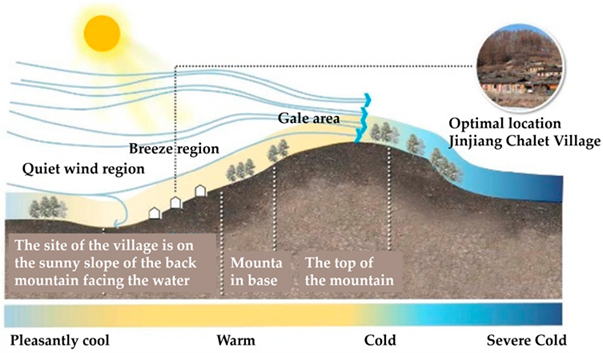 | 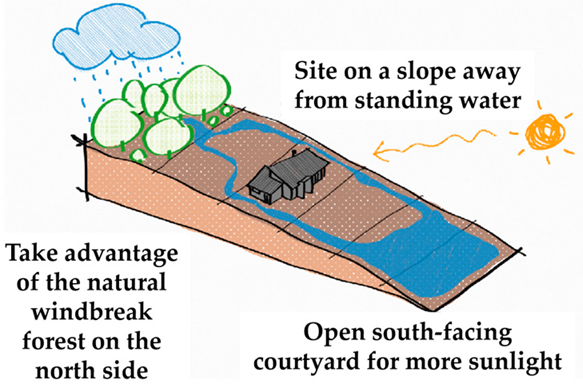 |
| Yard microclimate | 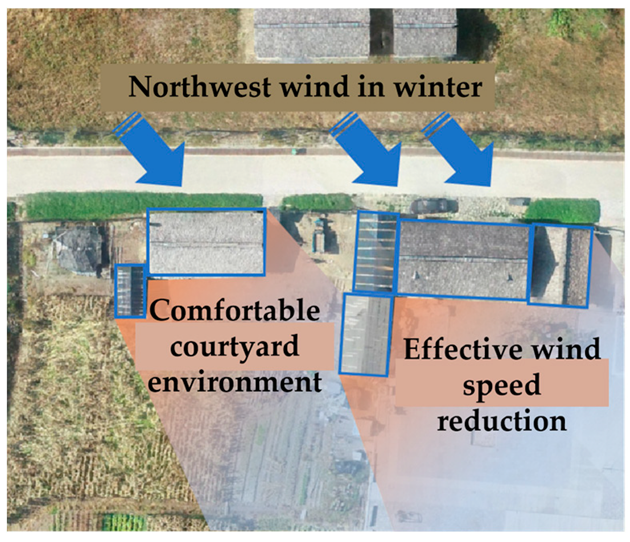 | 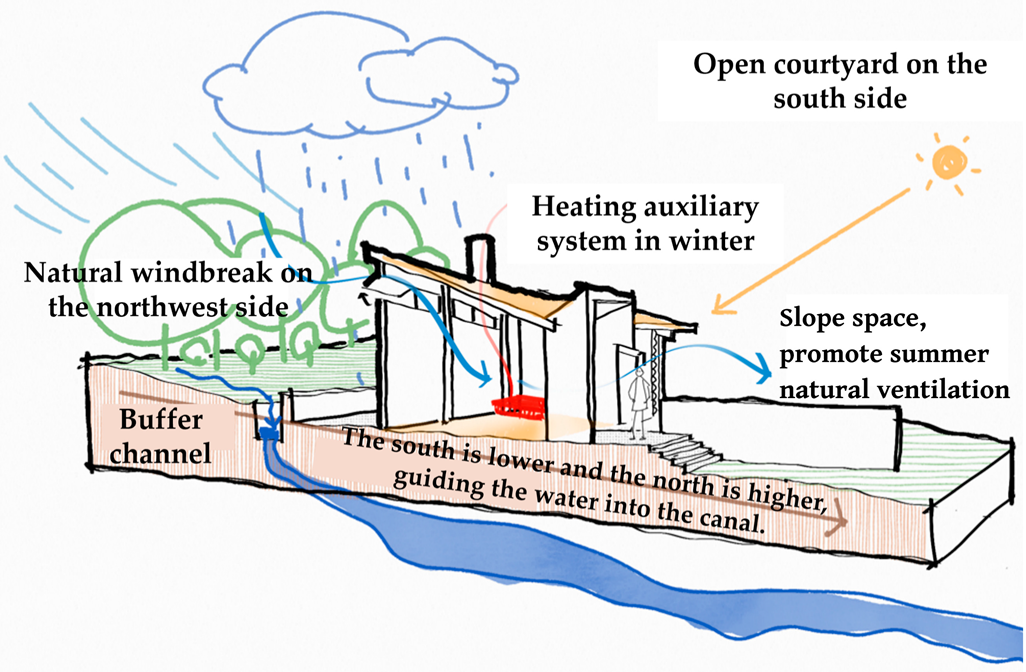 |
| Support structure | 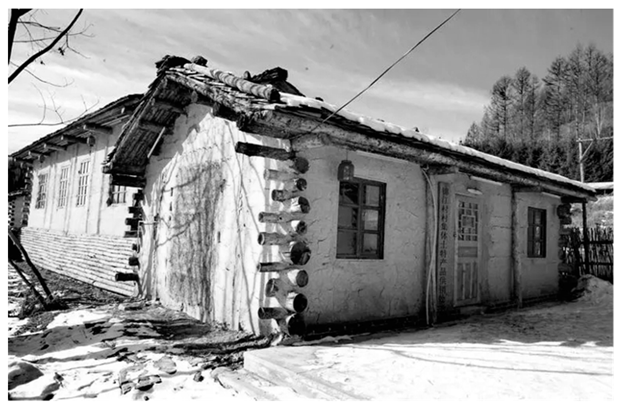 | 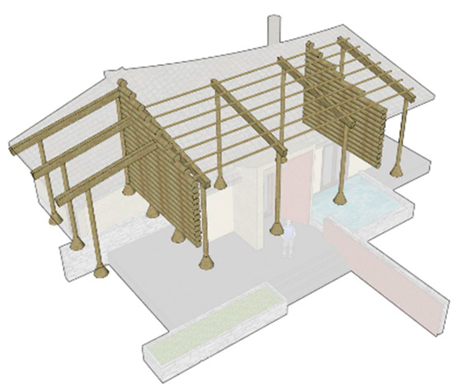 |
| Wood construction |  | 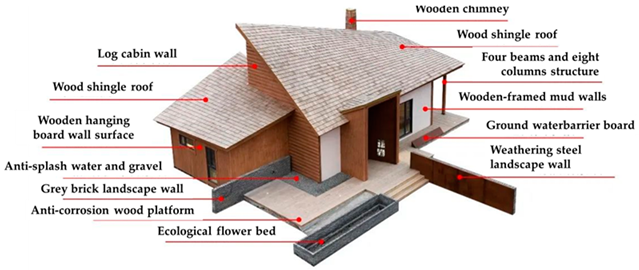 |
Disclaimer/Publisher’s Note: The statements, opinions and data contained in all publications are solely those of the individual author(s) and contributor(s) and not of MDPI and/or the editor(s). MDPI and/or the editor(s) disclaim responsibility for any injury to people or property resulting from any ideas, methods, instructions or products referred to in the content. |
© 2025 by the authors. Licensee MDPI, Basel, Switzerland. This article is an open access article distributed under the terms and conditions of the Creative Commons Attribution (CC BY) license (https://creativecommons.org/licenses/by/4.0/).
Share and Cite
Zhao, H.; Fang, J.; Lin, Z.; Tang, J.; Zhen, S.; Shi, H.; Hui, X.; Liu, Y. Living Inheritance of Traditional Knowledge and Practical Wisdom of Severe Cold-Region Traditional Villages: A Case Study of Jinjiang Chalet Village in the Changbai Mountain Area. Sustainability 2025, 17, 4225. https://doi.org/10.3390/su17094225
Zhao H, Fang J, Lin Z, Tang J, Zhen S, Shi H, Hui X, Liu Y. Living Inheritance of Traditional Knowledge and Practical Wisdom of Severe Cold-Region Traditional Villages: A Case Study of Jinjiang Chalet Village in the Changbai Mountain Area. Sustainability. 2025; 17(9):4225. https://doi.org/10.3390/su17094225
Chicago/Turabian StyleZhao, Hongyu, Jiandong Fang, Zhanlve Lin, Jiajun Tang, Shinan Zhen, Huijia Shi, Xiaoyu Hui, and Yuesong Liu. 2025. "Living Inheritance of Traditional Knowledge and Practical Wisdom of Severe Cold-Region Traditional Villages: A Case Study of Jinjiang Chalet Village in the Changbai Mountain Area" Sustainability 17, no. 9: 4225. https://doi.org/10.3390/su17094225
APA StyleZhao, H., Fang, J., Lin, Z., Tang, J., Zhen, S., Shi, H., Hui, X., & Liu, Y. (2025). Living Inheritance of Traditional Knowledge and Practical Wisdom of Severe Cold-Region Traditional Villages: A Case Study of Jinjiang Chalet Village in the Changbai Mountain Area. Sustainability, 17(9), 4225. https://doi.org/10.3390/su17094225








